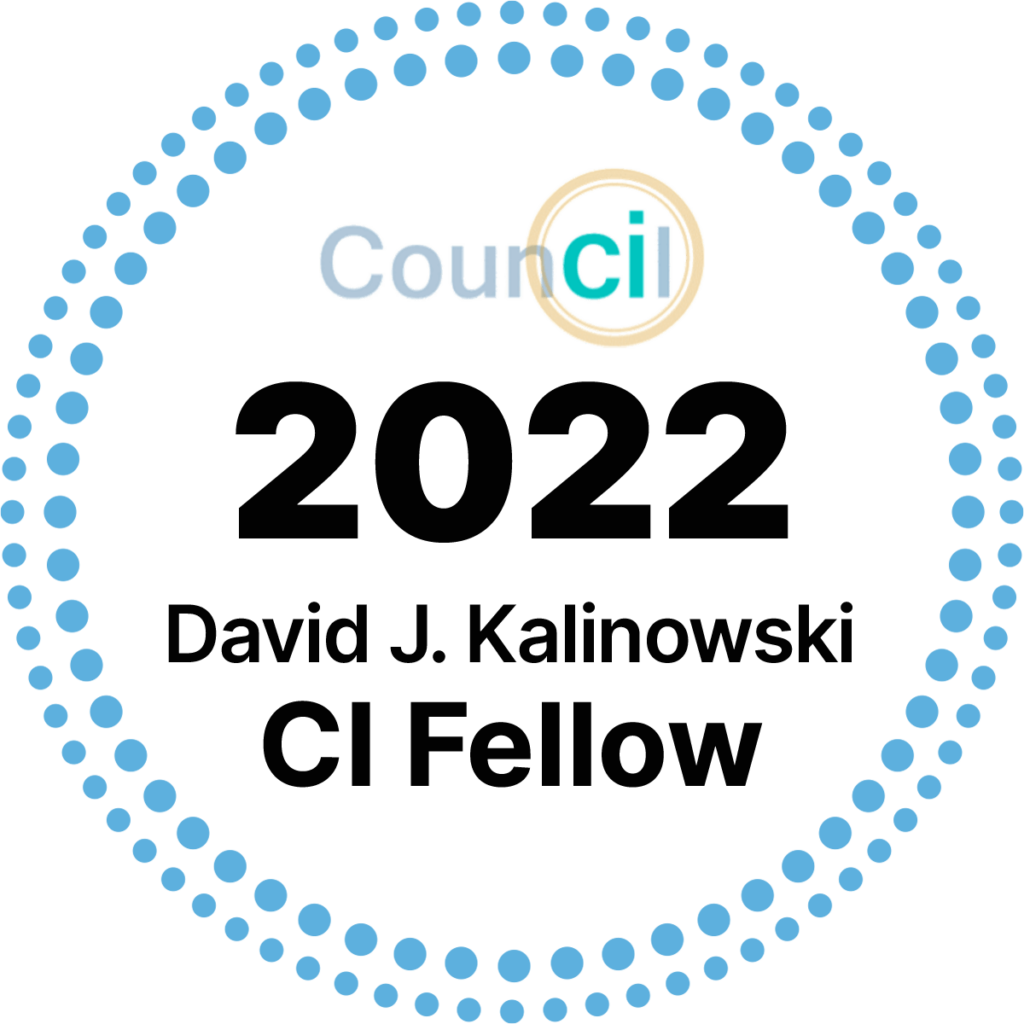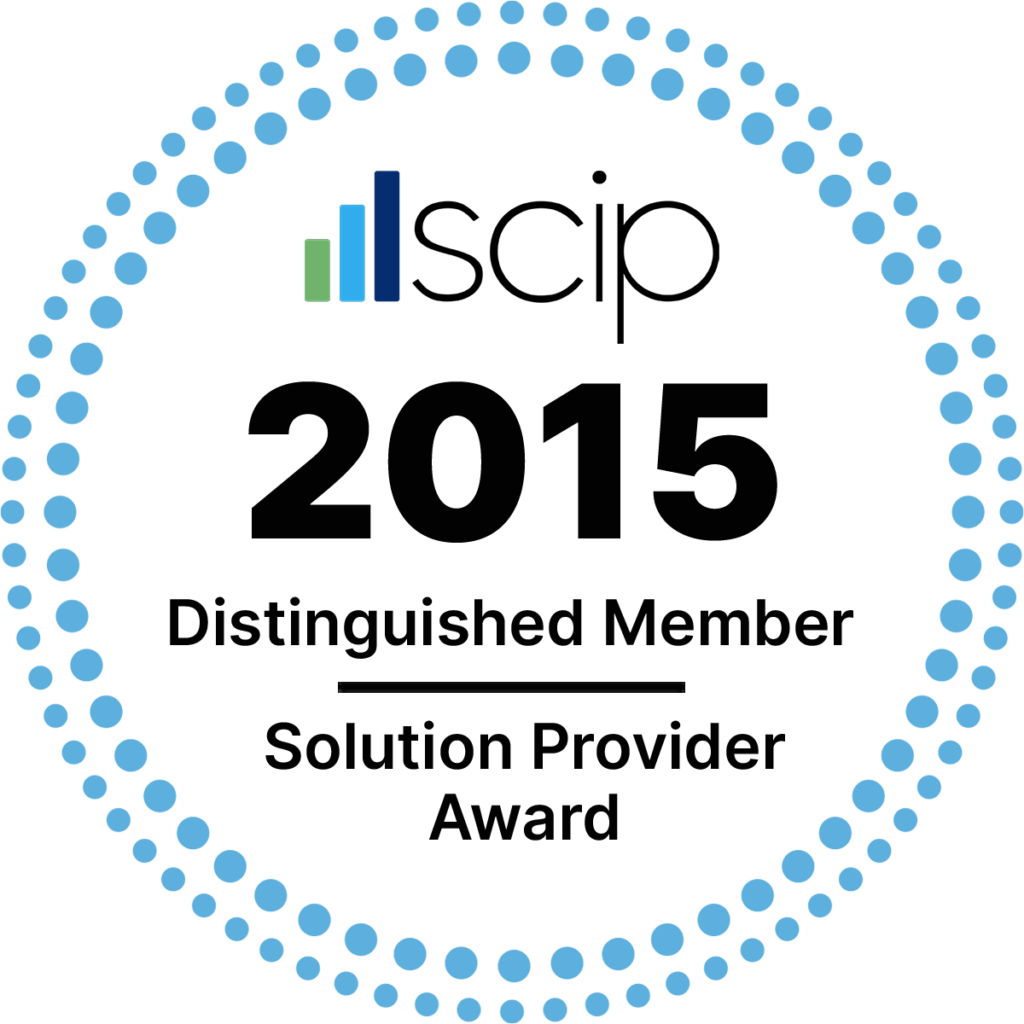Published: July 26, 2019

Customer experience (CX) is inseparable from a brand’s reputation. Discussions of one will invariably lead to the other, as improving customer service interactions and offerings should result in a directly enhanced company reputation.
Strategizing exceptional customer experiences doesn’t happen overnight. Businesses must first uncover what makes their customers tick — what deeply held beliefs, assumptions, motives and stories fuel the buyer’s journey, leading them to interact with one business over another. In short, you can’t exceed expectations if you don’t know what those expectations are. A customer insights research strategy ensures that you do.
What Is Customer Insights Strategy?

A customer insights strategy is a tailored set of research activities that help gather and analyze actual customers’ thoughts and feelings as they interact with your business. These perspectives as a whole comprise a business’ CX reputation. Everything from brand awareness to product or service familiarity, purchasing motivators, content marketing tactics, touchpoint amounts and even the design and navigability of your website influences your CX reputation. A CI (customer insights) strategy provides qualitative data to these often subjective sentiments so that you can make the most of your transactions across platforms.
Why Use Customer Insights Research to Enhance Your Customer Experience?

Performing CI research is essential to making savvy, customer-centric business decisions informed by real data, not broad trends or guesswork. When tactfully implemented, the insights from your CI analysis can allow organizations to achieve the following goals.
1. Reduce Customer Churn
Customer churn is a key performance indicator (KPI) that reveals how many customers you lost in a given time frame. Churn rates are a vital business metric to track because they influence a business’ returns on acquisition investments (ROIs). For the vast majority of businesses in new and mature phases, the tactics required to acquire new customers are far more expensive than those aimed at retaining loyal ones. When customer churn rates are high, acquisition costs are also high, meaning a business sees lower ROIs on marketing endeavors as they constantly cycle through consumers.
Customer churn data is also somewhat fluid. While most organizations categorize churn according to an exact number of lost customers, others may calculate churn based on the value of their lost business or the percentage of reoccurring lost or loyal customers.
CI research complements churn rate calculations but goes one step further: It reveals why customers have stopped doing business with an organization. Businesses can then make changes to remedy the identified pain points causing them to lose business, reigning in high acquisition costs and realigning ROIs on marketing budgets.
2. Increase Sales Revenue
Returning customers are prized customers because they spend more. Industry research proves that just a five percent annual increase in customer retention generates a minimum of a 25 percent increase in annual profits.
This positive correlation is due to the fact that repeat, hyper-loyal customers spend more than novice ones — up to 67 percent more per transaction. Repeat customer segments are especially open to cross and upselling opportunities since their brand trust and product or service satisfaction are already solidified.
3. Spur Emotional Engagement
Brand reputation and customer experience are emotion-based processes. They’re built upon intrinsic, intangible and subjective reactions that real, diverse people have with your business, both in-store and online. Because of this subjectivity, improving the customer experience often devolves into trial-and-error-like tactics. CI research ensures that a methodical, quantitative approach is taken using proven research methodologies, grounding all findings and subsequent decisions in hard data.
4. Turn Passive Buyers Into Loyal Customers and Loyal Customers Into Brand Evangelists
A thorough CI research strategy can account for the entire customer journey, from the awareness stage down to brand advocacy. It gathers real-customer data and insights for business leaders to learn what truly matters to customers. By integrating these exact findings into their websites, stores, e-commerce and social media platforms, they stand to attract and retain raving, emotionally gratified fans.
The Difference Between Customer Service and Customer Experience

Customer service and customer experience are similar but not synonymous:
- Customer service encompasses the direct, initiated help or assistance provided by a company’s support team to a current customer who has already purchased products or services. Its either a single touchpoint or touchpoints focused on remedying a user problem or pain point.
- Customer experience (CX) incorporates all the interactions, information and sentiment a customer, current or prospective, holds for your brand. It’s both tangible and intangible, measurable yet personal. It’s the driving pulse of an organization’s overall customer relationship management strategy.
Note how both customer service and customer experience are accounted for in a customer insights research strategy. Businesses untangle two strategic goals through one initiative, analyzing research findings and applying changes to the end-to-end customer journey.
What Goes Into a Great Customer Experience?

Great customer experience can be broken down into five servicing phases, which together complement the overall customer journey: awareness, engagement, acquisition, servicing and advocacy. A complete customer insights strategy customized for your brand should include research on each of these five domains.
1. Awareness
During the awareness phase, potential customers recognize a question, problem or inconvenience in their lives that they want remedied. That question or issue is informed by a list of “symptoms,” which trigger generalized research conducted online, increasingly via mobile devices.
The point of the awareness phase is for consumers to name their problem or answer their question. Brands that deliver well-rounded, relevant and precise explanations to these problems now sit at the center of a prospective customer’s radar. They’ve delivered powerful, problem-solving information and begun to differentiate themselves from the competition. This point is the first stage of the customer journey and the first chance to build a brand reputation known for generating great customer experience.
2. Engagement
During the engagement phase, a consumer has named their problem or found the answer to their question. However, their interest is now piqued on solutions — something that’s tangible, actionable and effective for their exact situation.
Consumers will begin to “engage” in more specific research on all the methods or ways to solve their problem. They’ll begin to compare products, read reviews, watch videos and search business’ websites to determine the best solution for them. All the while, they’re deepening their emotional attachment to the brands illustrating ideal resolutions.
3. Acquisition
Acquisition is the decision-making point in the customer journey. It’s the first time a consumer makes a product or service purchase, as well as the first time they experience your brand’s purchasing or sales pipeline, in-store or online.
Acquisition involves comparisons and benchmarking. The customer is likely weighing the information gleaned during awareness and engagement to assess a brand’s reputation, product and service ratings, customer service testimonials and the navigability and user-friendliness of its website. Yet there are additional, subliminal motivators at work during acquisition as well — things like lifestyle, self-image, age, geography and more further effect the CX-centered acquisition strategies that businesses take on.
4. Servicing
As its name suggests, servicing is the active, ongoing relationship management between a brand and the consumer. It involves the traditional definition of customer service, which entails singular touchpoints typically initiated by the customer to solve a specific product or service issue. Yet the servicing phase of the customer journey is more expansive than this support.
The best servicing brands are those asking how else they can add value to their customers’ lives: What kinds of resources, media, content and demos can they create? What kinds of product features or add-ons can they develop? How about creating customer reward programs or loyalty perks tailored to key demographics? The more a brand undertakes strategic, ongoing customer servicing efforts, the more they improve their brand reputation and CX.
5. Advocacy
Customer advocacy represents a crowning achievement for brands: A customer is so satisfied with a product or service that they decide to publicly promote the company on their own time.
Advocacy is best encouraged when context, immediacy and intent align. A consumer is far more likely to write a glowing review, share a video testimonial or recommend your brand to others if they see others facing similar problems (context), can do so conveniently (immediacy) and can connect their advocacy to a larger purpose or reward (intent).
How to Improve Your Business’ Customer Experience and Brand Reputation Through Customer Insights Research

The best way for brands to improve their CX and overall reputation is to initiate a customer-journey-focused CI research strategy. Here are suggestions for what that strategy can involve across the five customer journey phases.
Phase 1: Enhancing Your Business’ Awareness
During the awareness phase, the consumer is passively engaged with your business. Your CI research should help identify customers’ first impressions with your brand across mediums as well as the exact variables influencing those first impressions, be they positive or negative.

1. Conduct Channel Evaluations
Channel evaluations measure how effectively your consumer-facing platforms take leads from initial brand introduction all the way to ordering (acquisition), payment and ongoing servicing. Research is tailored but intuitive. Topics like website navigability, browser consistency, content architecture, load times, page performance, web design, lead generation and more constitute effective channel criteria to measure. Channel evaluations also help brands devise their channels’ core objectives, then optimize interfaces and features to reach those goals.
2. Create Buyer Personas
Buyer personas represent your ideal customer or user. Using customer segmentation research strategies, brands create personas to better understand what makes their target buyers tick — their wants, needs, fears, lifestyles and purchasing histories. Without persona segments, your content, channels and branding messages turn shapeless, speaking to everyone yet solving no one’s problems.
3. Benchmark Against the Competition
What customer experience tactics and tools are your main competitors using — and to what effect? CI research can conduct custom analyses comparing any or all of the following variables to determine how your platforms’ awareness strategies size up against competition:
- Sales funnel operations
- Marketing campaigns and channels
- Competitor buyer personas
- Product or service offering structures
- And more
4. Conduct Brand Perception Surveys
Consider sponsoring advanced, in-depth interviews like video-recorded user focus groups and Voice of Customer (VOC) surveys to learn what real-life audiences think of your brand. Tailor questions to cover brand awareness, brand recall, product perception and overall business impressions, using both open-ended, qualitative discussions as well as quantitative questionnaires.
Phase 2: Improving Your Business’ Engagement
Once a consumer is aware of your brand as a potential answer to their pain point, the insights from CI research strategy can funnel their interest from passive to purchase — incorporating positive CX moments along the way.
1. Journey Map Your Ideal Customer Experience
Imagine the ideal, end-to-end scenario you want a lead to experience upon first hearing of your brand: What’s the very next step you want them to take? Where do you want them to go? What products or services are most appealing to them, and how do you send those their way? Over what platform? How many touch points are appropriate pre- and post-sale? Most importantly, how do you want consumers to feel during those touch points? Leave no stone unturned in outlining your ideal customer journey pipeline, as it provides the scaffold to improving overall CX.
2. Up Your Brand’s “Personality”
Research shows that our brains make the majority of purchasing decisions based on emotions, then justify those decisions via logic. Yet when a business looks and sounds like everyone else, it gets lumped in with everyone else. By infusing brand visuals and messages with distinct personality — authoritative, witty, contrarian, conversational, etc. — businesses better tap into emotional consumer reactions, therefore establishing deeper recall and engagement rates.
3. Deploy Personalized Content Marketing
Utilize specific traits and interests defined within each buyer persona to create custom content marketing funnels. Organizations can use their customer relationship management software to trigger unique content pipelines, such as a different three-part email campaign sent to customers depending on what web page they initially viewed. Tailored content marketing makes it seem like your brand is speaking directly to the consumer and only that consumer, differentiating their customer experience.
4. Conduct User Experience (UX) Studies
What is it like for a prospective customer to explore your website? How many clicks does it take to get to a particular sales page? What is your average page load time? Are websites clean and inviting or cluttered and outdated? Consider live VOC or video-recorded feedback of test user groups navigating your website and social media platforms, hearing first-hand and in real-time their impressions and observations on digital UX.
5. Build a Better Online Customer Funnel
Customer funnels, or corridors, incentivize specific actions or behaviors from the customer. CI research can conduct personalized corridor analysis to determine what a business’ current funnel strengths and gaps are, then harmonize those digital platforms to better move a consumer toward acquisition, all while they feel like they’re undergoing a personalized CX.
Phase 3: Improving Your Business’ Acquisitions

Acquisition rates indicate how successfully your business courts consumers along their CX journey. Without CI research, organizations can’t identify the specifics on why a customer was motivated to make a purchase — or if they’ll do so again.
1. Test Direct User Programs
Direct user programs apply direct research methodologies to longer-term UX groups. Rather than holding single sessions where volunteers use and then critique customer platforms and channels, direct user programs can be morphed to present prototype customer personas with particular consumer circumstances, then review how they work through transaction decisions. Insights from these CI direct user programs funnel into improved acquisition strategies for your website, stores, offices, sales touch points, customer service interactions and more since they set the stage to prompt ideal consumer behaviors.
2. Elicit Post-Sales Feedback
Gathering feedback on a customer’s purchasing experience is imperative to devising more user-friendly and profit-maximizing sales conversion strategies. Organizations determine — in a customer’s own words and often immediately after purchase — what motivated their buying decision, how easy the purchase was to make and any details or features they want next transaction.
Post-sales feedback is often collected using traditional, direct feedback methods such as online surveys, emailed questionnaires or simple polls hosted on a sales pages. Consider questions like:
- How did you first hear about this product/service?
- What attracted you to this product/service?
- What do you most look for during shopping experiences?
- How do you feel using this product/service?
- What three words would you use to describe your purchase experience?
3. Calculate Acquisition Costs
Tracking actual acquisition costs allows businesses to discern which marketing channels and campaigns are most effective yet court the lowest launch and upkeep costs. They can then invest more resources into successful acquisition platforms or create similarly cost-effective content to drive further acquisitions, all while simultaneously supporting a more personalized, persona-based customer experience.
Phase 4: Enhancing Your Business’ Servicing
Customer insights research assists in creating ongoing, value-adding touch points and interactions between brands and consumers, moving the relationship beyond mere transactions and into true lifestyle alignment.
1. Funnel Content Based on Purchase History and Web Browsing
Customer relationship management software and plug-ins can automate persona-tailored content funnels for your marketing team, adding a new layer of “non-salesy” touch points to your operations. Tailored content sent to customers’ inboxes or appearing on their social media feeds keeps your brand top-of-mind. Customer insights research can analyze what content receives the highest clicks, shares and engagement rates, plus what landing pages convert into the most returning sales.
2. Strategize Customized Cross and Upselling Opportunities
CI research can also wield user experience groups to sharpen the effectiveness of current product searches and comparisons, then target new cross or up-selling suggestions based on activity. Businesses once again improve their CX by promoting a more tailored set of product or service offerings, triggering further personalized sales funnels and seeing greater ROIs on marketing campaigns.
3. Track and Maintain Multiple Customer Service Platforms
Different buyer personas will respond best to different customer service platforms. For example, the 25-year-old female who’s just downloaded your mobile app may appreciate a live chat box allowing her to message quick questions or concerns to an online representative. However, her 55-year-old father may want a traditional, real-time phone call to a dedicated customer service line.
Both your customer service reputation and your overall customer experience are enhanced when you support multiple, persona-researched servicing platforms, then track their usage and satisfaction rates with clients.
4. Reward Employees Who Wow Customers
Employees who go above and beyond to service your customers during live interactions should be rewarded for their work. Small bonuses, monthly prizes and even creative tokens of thanks can inspire your organization’s customer service reps to wow customers with creative problem-solving or add-ons during each touch point, enhancing your overall customer experiences.
Phase 5: Improving Your Business’ Advocacy Rates

Like the servicing phase, brand advocacy should be seen as fluid and ongoing — not the end of the CX line. Organizations can use CI analyses for many advocacy benefits, pinpointing how to encourage brand loyalty, boost the quantity and quality of repeat sales and maximize organic brand evangelism, all to compound their internal brand reputation efforts.
1. Calculate Customer Equities, Then Tailor Customer Experiences to Them
Customer equity calculations are a useful metric for an organization to determine its highest-value customer segments. Customers with high equity represent a purchasing loyalty that, with the right CI-informed content marketing insights, channel data and consumer feedback, can be further catalyzed. More specifically, high-equity groups should receive unique content and rewards thanking them for their loyalty, differentiated from the content and rewards middle and lower equities receive. This strategy sets the stage to create tiered loyalty programs further distinguishing your great customer experience.
2. Leverage an Emotional Impact
Consumers are more likely to advocate for brands they feel a personal connection to. As noted earlier, purchasing decisions and brand connections are emotion-based, not necessarily logical or factual. Improving your business’ organic advocacy and therefore brand reputation means identifying the emotional motivators of your customer personas, specifically high-equity ones, then tailoring advertisements, marketing messages, website copy, landing pages, emails and more to them.
3. Prioritize Two-Way User Engagement, or “Digital Care”
Social media platforms make real-time, two-way engagement between brands and customers easier than ever. More than half of consumers are motivated to write social media reviews after exceptionally good or exceptionally bad experiences. Companies that respond to such posts — both positive and negative — will see customers return to spend 20 to 40 percent more on subsequent purchases.
What’s more, social media presents built-in analytics to track KPIs like positive versus negative customer sentiment as well as engagement loyalty. Changing customer service expectations can be studied and analyzed using user test and focus groups compiled by CI research teams, measuring reactions to various social media customer support response tactics, user-generated campaign strategies and more. In short, it pays to be proactive with customer experiences over social media.
4. Conduct More Surveys, Get Additional Feedback
Your high-equity customers are a unique, prized resource to glean feedback from. Use a variety of means to elicit their perspective on your website, products, services, social media practices, content marketing resources and more.
Get Started on Your Custom Customer Insights Research Strategy for an Improved Customer Experience — and Brand Reputation — Today
CI research allows businesses to know their customers better. Yet it goes one step further: CI reveals those “little” differences that make all the difference in the world to actual people.
For more information on evidence-based customer intelligence, explore Proactive Worldwide’s resource repository, which includes blogs, podcasts and more on how to improve customer experience in today’s evolving markets. Then, contact the CI analysts at Proactive Worldwide to learn about our evidence-based customer and user experience research, voice-of-customer interviewing services and digital experience consulting.















